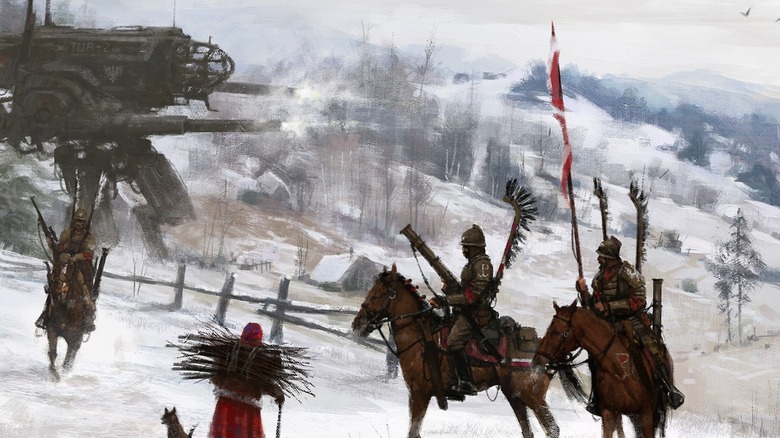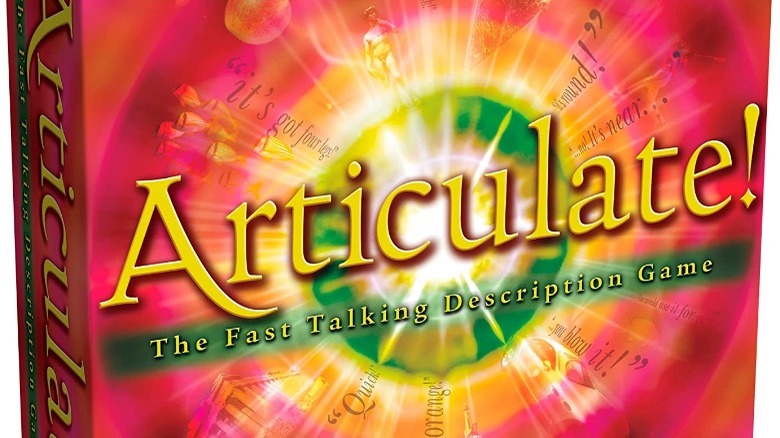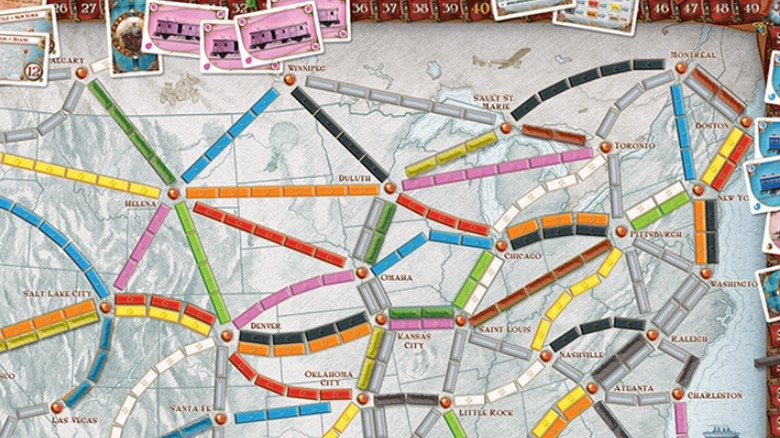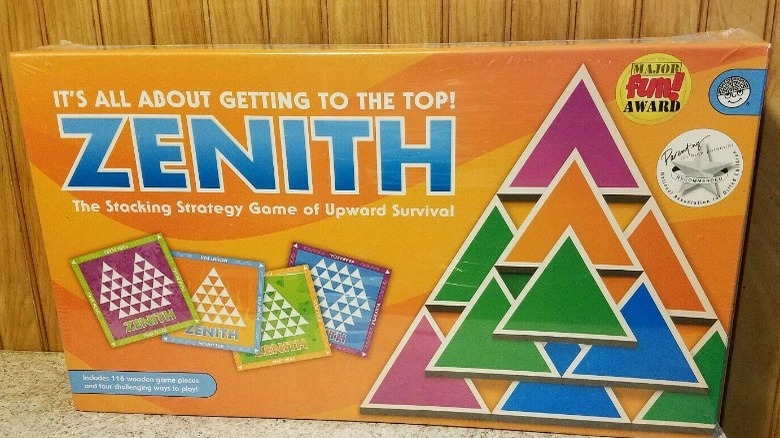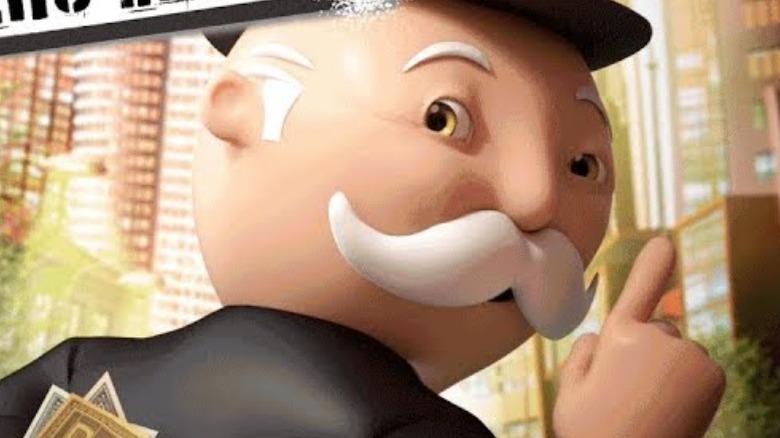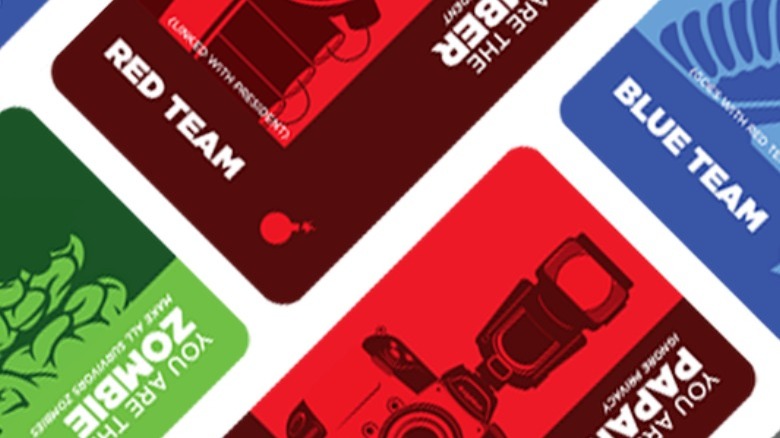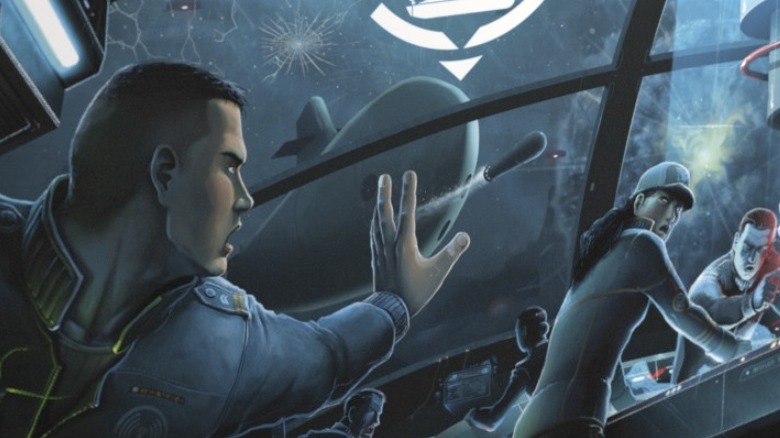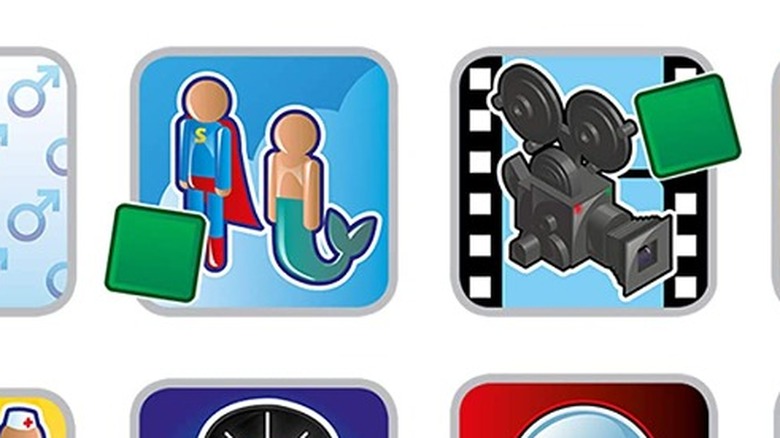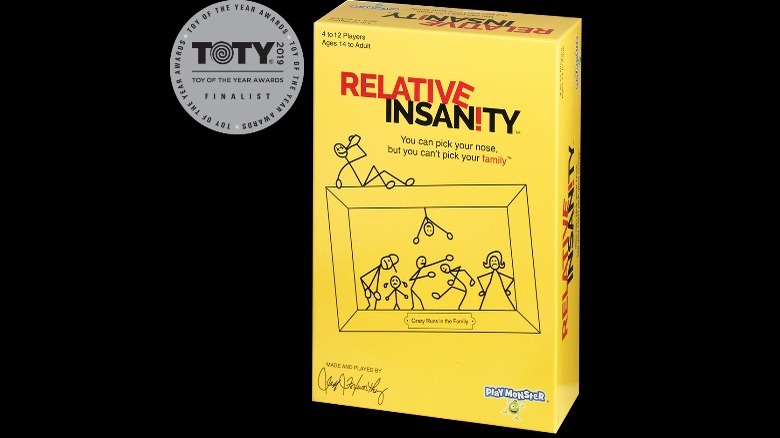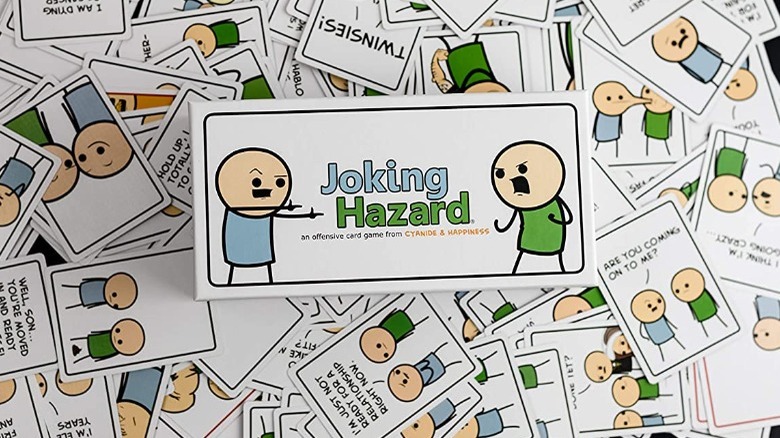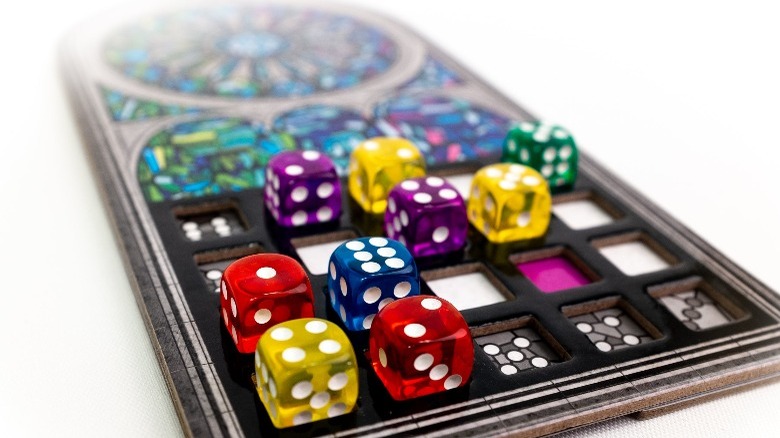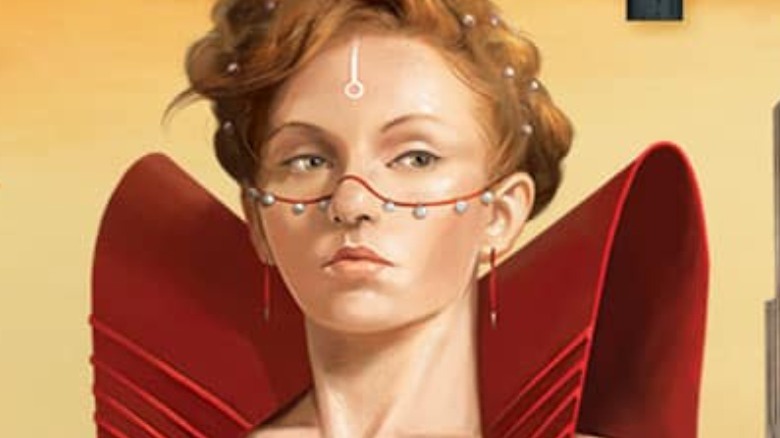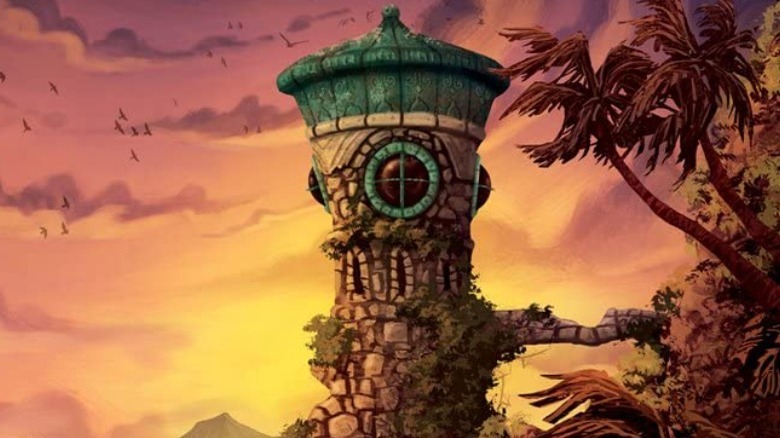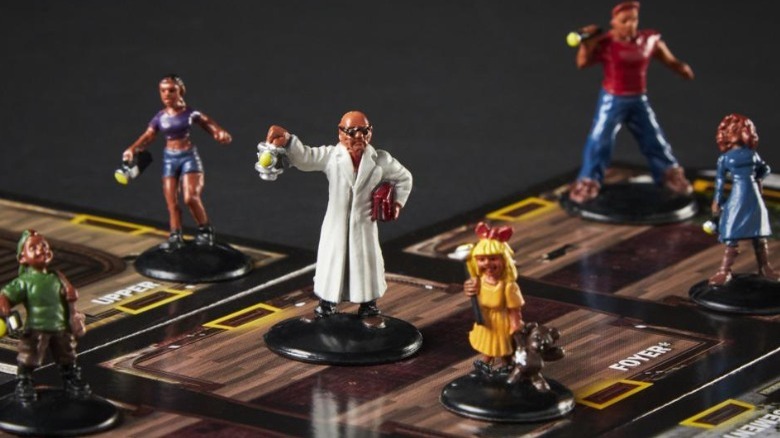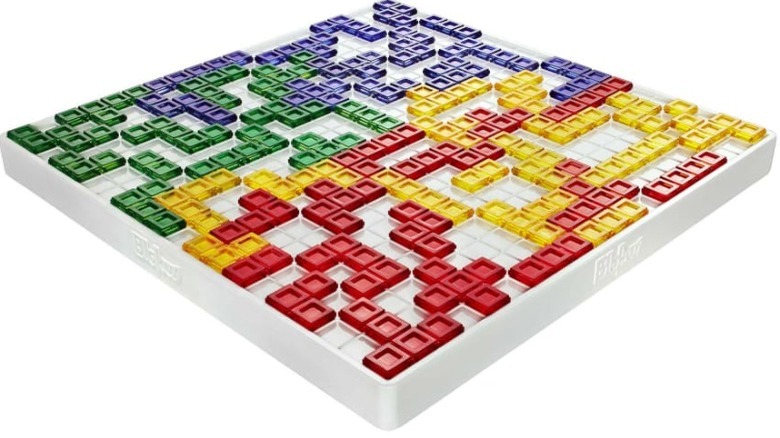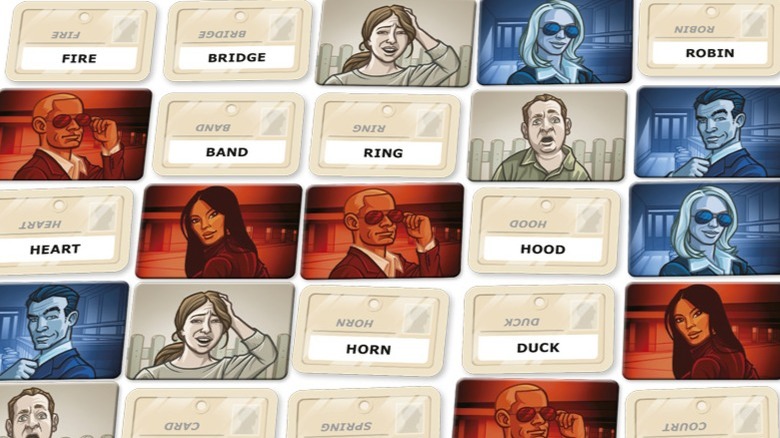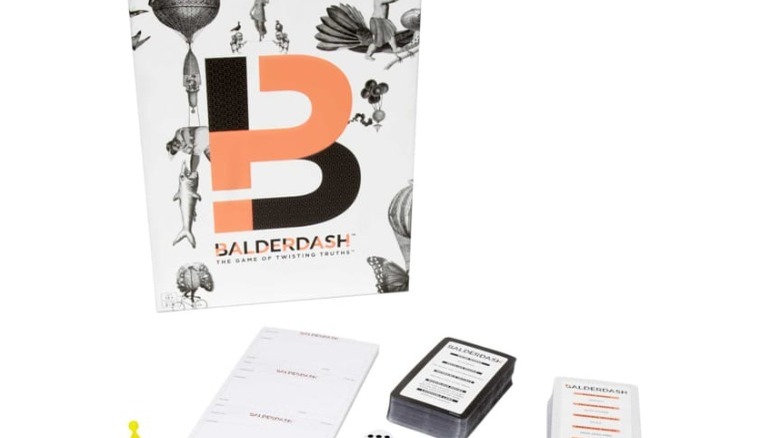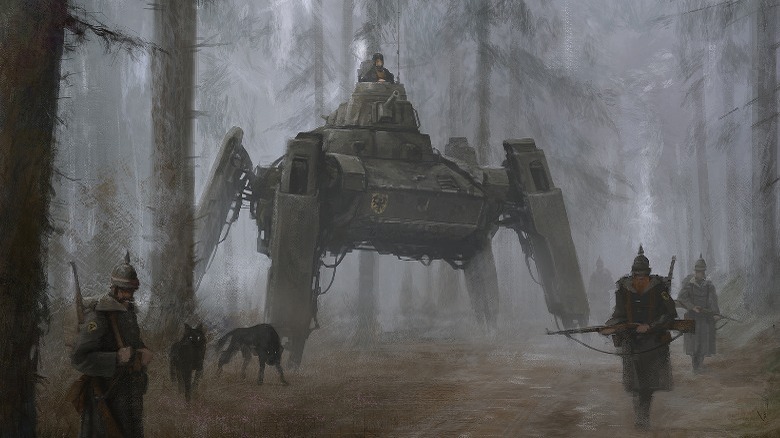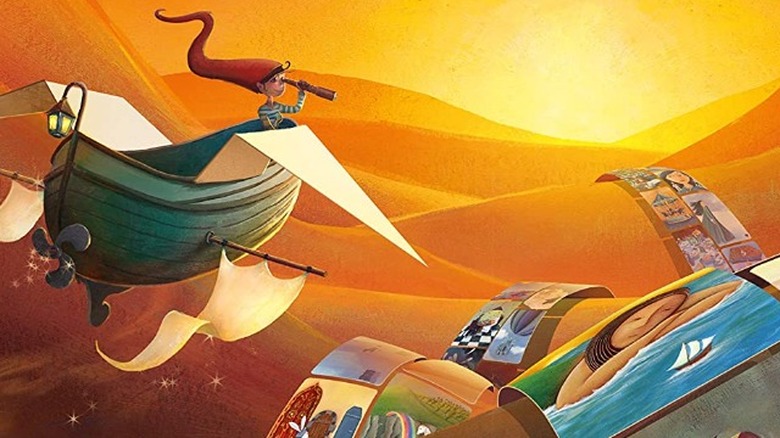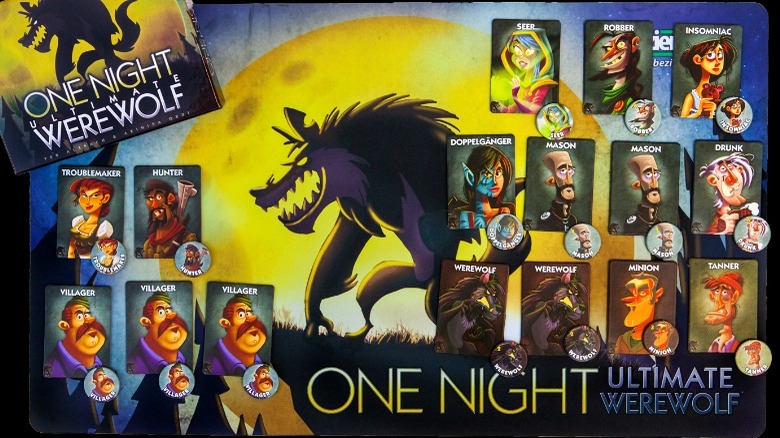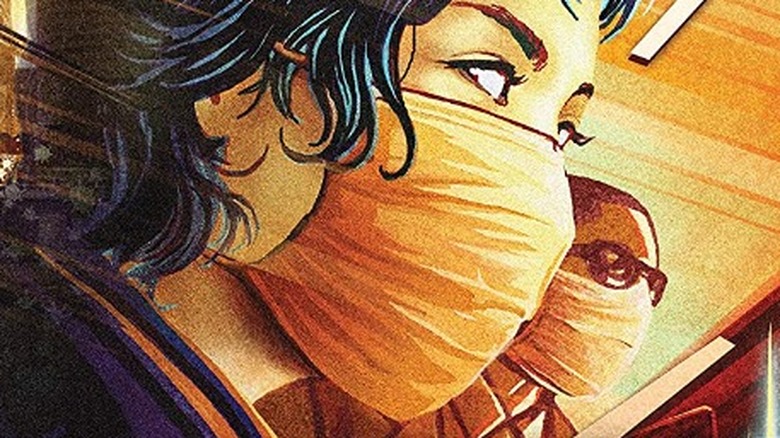25 Best Board Games For Adults Ranked
Who said board games were just for kids? There are plenty of board games for adults out there, but that doesn't mean all of them are good. Like, who thought it was a good idea to make a game based on the book "Men Are From Mars, Women Are From Venus"? And did we really need a "Titanic" board game? With so many options, how do you separate the gold from the pewter?
We can make the job easier. We've handpicked 25 essential board games for adults that you should have in your collection. Some of these games are so simple kids can play them (but adults will love them, too). Others are definitely not for kids, so parents had better store these games on top of the refrigerator. A few are technically card games, if you want to split hairs, but we included them because they're some of the best adult games out there.
25. The Misery Index
Which is worse: a shard of glass in your salad or a root canal? If you can seriously consider that question without squirming, then you would probably be good at playing "The Misery Index." Actually, "The Misery Index" was originally called "Sh** Happens," before it was turned into a game show called the "Misery Index," which was then adapted as a board game again, according to The Fandomentals. No matter which version you play, the rules are the same: you need to rank unpleasant experiences in order of their unpleasantness.
The deck consists of 200 cards, each depicting a miserable situation like "Struck by lightning" or "Surgeon amputates wrong leg." These scenarios were then assigned a number on a scale from 1 to 100 by "a panel of experts based on physical pain, emotional trauma, and long-term psychological impact," says BoardGames.com. Players must pick a card and then, without looking at the number, try to guess where it falls on the Misery Index. The Fandomentals points out that you can only play "The Misery Index" so many times before you start to have most of the cards memorized. However, while the novelty lasts, it's still a creative and hilarious game for adults.
24. Articulate
Despite what the title of this game suggests, players may find themselves quite inarticulate when playing this party game. To play "Articulate," you must draw a card and then try to get your teammate to guess the word on your card by giving them clues. For instance, if the word is "shipwreck," you might say, "Robinson Crusoe" or "you'll drown if this happens." However, you can't tell your teammate how many letters are in the word, what letter the word begins with, or what the word rhymes with. Also, you're not allowed to say anything that contains a different form of the word – so you can't say "shipwrecked" or "sunken ship." As a result, you may be fumbling for the right words for quite some time before your teammate figures it out.
Geeky Hobbies wrote that "Articulate" doesn't exactly reinvent the wheel, as there are several board games with a similar premise, including "Taboo" and "Alias." However, the reviewer added that this particular game "knows what is needed for a good party game."
23. Ticket to Ride
We know what you're thinking: "Ticket to Ride" is not a Beatles-themed board game (though there are certainly plenty of those). Instead, it's a game with a Transcontinental Railroad theme in which players try to lay down tracks across North America (or Europe, because there's a version set in Europe, too).
The board is designed to look like a nineteenth-century map, which is a nice touch. Players must try to claim routes between the cities on the map by laying down color-coded trained cars. If you're the first one to claim a route, you can block your opponents and force them to take the "scenic route" instead (that is, the long way around). At the end of the game, the player with the widest network of railroads wins.
"Ticket to Ride" won the Spiel des Jahres award in 2004, says Wirecutter, and it's easy to see why. GamesRadar+ describes it as "laid-back" with just enough "tactical depth" to keep things interesting.
22. Zenith
Kids 8 and up can play "Zenith," but that doesn't mean it's too easy for adults. In fact, this reviewer admitted his young daughter beat him at this game "on the second try."
The "Zenith" board is printed with a pattern of triangles, and each player starts out with a bunch of wooden triangles. Players can set their triangles on top of one of the empty spaces on the board, or they can balance it on top of three triangular pieces already on the board. But here's the catch: you can only build on top of other pieces if at least one of the three underneath is your own. And ... that's pretty much it. The rules are simple, but the game can get quite brutal when players are fighting to dominate the dwindling available space. The higher the stack of pieces becomes, the fewer options you'll have. If you run out of options, you drop out of the game, as shown in this demo by the game's co-creator, Nicholas Cravotta.
21. Monopoly: Cheater's Edition
You have probably seen a lot of strange "Monopoly" editions (like "The Walking Dead Monopoly" or "Monopoly: Sun Maid"), but we bet none of them can compare to "Monopoly: Cheater's Edition." This subversive little game comes with plastic handcuffs and a pewter T-Rex with an extendable arm.
The rules are essentially the same as regular "Monopoly" – y'know, except for the cheating part. You can't cheat however you want, whenever you want, though. Instead, there's a deck of Cheat cards, with five cards displayed in the center of the board. These cards encourage you to do things such as steal another player's money, overcharge a player for rent, or even move another player's piece instead of your own. You can complete any of these actions on your turn or another player's turn – but only if you don't get caught. If you cheat and nobody calls you out for it before the next player's turn, you get rewarded. If another player sees what you're up to, there are high penalties.
If for some reason that doesn't satisfy your urge to cheat, the rules also offer an Ultimate Cheater's Mode, where there are no rules whatsoever.
20. Two Rooms and a Boom
Bumbling Through Dungeons describes the game "Two Rooms and a Boom" as "chaotic, tribal fun," which makes it a perfect board game for adults.
This social deduction game is played with two teams: the Blue Team (which includes the President) and the Red Team (which includes the Bomber). After each player is randomly assigned a Character Card (which determines whether they are working for the Red Team or the Blue Team), the players are separated into two different rooms. At the end of each round, each room will select a handful of players to "trade" with the other room, which further obscures who is on which team. At the end of the game, everybody must show their cards. If the President is in the same room as the Bomber, the Red Team has succeeded at their mission (that's where the "boom" comes in). If the President and the Bomber are in different rooms at the end of the game, the Blue Team wins.
Board Game Quest praises the artwork on the Character Cards and says that the game "stands out from other 'party' games."
19. Captain Sonar
If you think "Battleship" is a game for wimps, then "Captain Sonar" might be just the game for you. It's essentially "Battleship" on steroids. Ars Technica applauds it as one of the best board games for eight players.
In "Captain Sonar," players divide into two teams of four; each team sits on opposite sides of a folding screen that hides their actions from the other team. You have no idea where on the map your opponents' submarine is hidden. You can, however, hear the directions that the captain of the opposing team gives to their partners, which you can use to figure out the enemy's location. Each player has their own important role to play, each of which is wonderfully explained by Teach the Table. The Captain decides which direction your submarine moves, announces it so the other team can hear, and records it on his map. Meanwhile, the Radio Operator pays attention to what moves the other team is making, in an attempt to narrow down their location. The Engineer keeps track of the damage to the ship, while the First Mate controls the submarine's torpedoes, sonar, and other special features.
Also, did we mention that there are no turns? The game is played in real-time, which means gameplay can get intense.
18. Concept
Some players have described "Concept" as "Charades the board game," but Board Game Quest says that Concept is much more than that.
In "Concept," you must get your teammates to guess the secret word. Instead of "acting out" your word like in Charades, you can only give clues by pointing to icons on the game board to help your teammates narrow down what your word might be. For instance, you might place the question-mark token (which indicates the "core" concept behind the word) on the picture of a stick figure to convey that your secret word is a person. Then you can put additional tokens and cubes on other icons to provide additional clues to zero in on your concept. E.g. if you put a piece on the paint palette, that will send the message to your teammates that this person is a famous artist. And then if you place a piece on the ear icon, and another on the square that shows scissors cutting something, then hopefully the other players will figure out you are referring to a certain artist who cut off his own ear: Vincent Van Gogh.
"Concept" certainly isn't an elaborate affair, but therein lies its charm. "It is streamlined," says Shut Up and Sit Down, and "cleansed of all unnecessary board game baggage." Most importantly, it challenges players to think outside the box.
17. Relative Insanity
When asked to think of a board game that involves telling hilarious (and sometimes naughty) jokes, most folks will immediately think of "Cards Against Humanity," a card game that has a 17+ age rating for a reason. While "Cards Against Humanity" has its merits, it does perpetuate stereotypes and rely on a lot of sexist and racist punchlines, as pointed out by Shut Up and Sit Down. So we're going to recommend a game that has almost exactly the same rules, but is relatively less offensive (though it still certainly contains some adult humor). Say hello to "Relative Insanity."
Relative Insanity contains two decks. First, there are the Setup Cards, each designed to be the setup of a joke – such as "Halfway through my grandmother's funeral, my uncle leaned over to me and said ... " Meanwhile the Punchline Cards offer hundreds of possible punchlines, like "I gotta get my groove on," or "I feel pretty today!" For every round, the judge draws a Setup Card and the other players each play a Punchline Card. Points go to the player whose punchline the judge finds the funniest.
Eric Mortensen of Geeky Hobbies said that he was "pleasantly surprised" by the game and recommended it was a nice middle ground between "family friendly games like 'Apples to Apples' and adults only games like 'Cards Against Humanity.'"
16. Joking Hazard
If you're looking for a creative board game with an adult sense of humor, "Joking Hazard" is definitely your game. The creators of "Joking Hazard" combined the basic concept of "Apples to Apples" with the Cyanide and Happiness Random Comic Generator.
Each card contains a single comic panel. (For example, there's a card where a stick-figure person tells a stick-figure psychiatrist, "And that was the last time I ever saw him ... ") These can be combined with two other cards to make a three-panel comic strip. The panels are ambiguous enough that they can be used as a setup or punchline, depending on the cards around them. The judge picks a random card from the deck, then selects another card from their hand to create the first two panels of a comic. It's everyone else's job to find a card in their hand to complete the comic. Whoever provides the funniest ending to the comic scores a point.
Better Homes and Gardens says this is a perfect game for (adult) parties. It's impossible not to love a game whose box says the game requires "3-10 bad people" and is for ages 18+ because of "(im)mature content."
15. Sagrada
Who says you can't play a board game and make beautiful art at the same time? In "Sagrada," the objective is to create a stained-glass window by arranging colorful, translucent dice in a grid pattern. Each die has its own color and shade (as determined by the numbers 1-6). Your job is to fill your grid with dice so that it matches up with secret guidelines you have been given (e.g. this square must be red, that square needs to be a 5). You can get bonus points by ensuring your pattern also follows the public guidelines laid out on the table. To make things tricky, you can never let two dice of the same color or number touch.
The artistic design of the game is downright "gorgeous," says Wirecutter, and it's a refreshing change of pace from strategy games that involve buying or selling or stockpiling resources.
14. Coup
"Coup" is a very simple game. There aren't a lot of moving parts — just 15 cards, some money tokens, and that's it. But simple is not the same thing as easy, and "Coup" is a tricky game indeed.
The deck consists of three copies of each of the five characters (the duke, the assassin, the contessa, the captain, and the ambassador). The characters each have a unique special ability. You start with two cards in your hand, which signify the two characters you have "influence" over. You can use these two characters' special abilities – or you can bluff and pretend you have another character in your hand, and then use that character's abilities. But watch out – if another player gets suspicious, they can call your bluff then you'll need to sacrifice a card. You win when all the other players must give up their influence cards.
What distinguishes "Coup" from other bluffing games (like The Resistance), says The Board Game Show, is that the rules don't require you to lie. In fact, it's possible to win by always telling the truth – yet it's still incredibly tempting to bluff anyway. Or, if that's not enough to sell it to you, you should try this game purely for its awesome character illustrations.
13. Forbidden Island
If you think cooperative games can't be challenging – "What's the fun if everybody's on the same team?" you may ask – then allow us to introduce you to "Forbidden Island." In this board game, players fight against the game itself, which can get quite aggressive.
The board, made up of 24 beautifully-illustrated island tiles, is different in each game and grows increasingly smaller as the game stretches on. Your team's objective is to claim all four treasures (represented by four gorgeous figurines) on the island by moving around the board and collecting matching treasure cards, but you need to do this before the whole island "sinks." If you pick a Flood Card that matches a certain tile on the board, it gets flipped over and is "flooded." If you pick a Flood Card for that tile again, it disappears from the board – permanently.
Once you've mastered the "Forbidden Island," you can up the ante by increasing the water level at the start of the game, trying alternative tile layouts, or buying the game's equally impressive sequels: "Forbidden Desert" and "Forbidden Sky."
12. Betrayal at House on the Hill
"Betrayal at House on the Hill" has made the list of best board games for Wirecutter and is at the tippy top of the list for GamesRadar+. Here's why.
The first stage of the game (Act I) seems simple enough. Players take on the roles of one of twelve characters (classic horror movie staples like the preacher and the fortune-teller) and begin exploring a haunted house as a team. The haunted house is different each time, because players build the board one room tile at a time, never knowing what lies right around the corner. But once the players draw enough omen cards, it triggers Act II of the game, and that's when things really get wild.
In Act II, the rules will change completely as players are faced with one of 50 different possible scenarios. "Maybe the house begins to sink into a swamp, forcing you to race for a boat in the attic," says GamesRadar+. "Perhaps a monster awakens in the basement, or your foe happens to be invisible." The possibilities are endless. Best of all, one of the players is now a traitor, and they will be given their own secret objectives so they can actively work against the other players. Geeks Under Grace (via Board Game Geek) said that not all of the 50 possible endgames are perfect, but the game more than makes up for its flaws with sheer, unbridled fun.
11. The New Yorker: Cartoon Caption Game
This board game originally started out as an official Cartoon Caption Contest for "The New Yorker." After examining a one-panel comic, readers would then submit funny captions to accompany it, and the winning caption would be published with the cartoon in "The New Yorker." Later, All Things Equal, Inc. adapted this contest into a board-game format, called "The New Yorker: Cartoon Caption Game."
Each card for this game shows a comic from a previous contest in "The New Yorker." For instance, the card might show a penguin in a Hawaiian shirt. The judge picks a card, and then all the other players must write down what they think the penguin ought to be saying. You can get points if the judge decides your caption is the funniest, or if you correctly guess which player submitted which caption.
Adam Mortensen of Geeky Hobbies said that at first he was concerned it would be too challenging to come up with a clever caption, but playing a few rounds quickly put that fear to rest. He found that the cards offered plenty of inspiration. Unlike "Relative Insanity" and "Joking Hazard," "The New Yorker: Cartoon Caption Game" isn't limited by the cards provided by the game creators. You can write anything you want for the captions, so the only limit is your imagination.
10. Blokus
"Blokus" seems laughably simple at a glance. In fact, the instructions boast, "One rule, endless possibilities!" Though we would argue it's more like one-and-a-half rules, but then, that's still much simpler than the vast majority of board games. Yet despite its short instruction manual, "Blokus" is maddeningly difficult and quite addictive, according to The Games Journal.
Each player starts out with an array of tiles in various shapes. For instance, there's a T-shaped piece, an X-shaped piece, and a piece made up of a single tiny square. On your turn, you place one of your pieces on the grid. It must touch one of your pieces already on the board – but only diagonally. Your piece cannot touch any of your other pieces horizontally or vertically. "Blokus" quickly escalates into a frantic scramble to fill up all the available space on the board. Players are forced to think of clever ways to wriggle in between their opponent's pieces, just to have room to expand. Geeky Hobbies describes "Blokus" as "the perfect combination between simplicity and strategy."
9. Codenames
Czech designer Vlaada Chvátil brought us an ingenious social deduction game called "Codenames" in 2015, and it was an instant hit. It has made Wirecutter's list of Best Beginner Board Games for Adults, and at the time of writing, is Board Game Geek's No. 2 party game out of more than 10,000 games.
The rules: after arranging a square of 25 word cards into the table, players divide into two teams (red and blue) and choose one person on each team to be the spymaster. Each word on the table is meant to be the codename of a secret agent, but only the spymasters know which codename is on which team. Each spymaster must try to get their teammates to identify the codenames of their fellow agents, but the spymasters can only give their team one single-word clue per turn. So if the blue agents' codenames are "nut" and "bark," the spymaster might give the clue "tree,” since both words relate to trees. Except, maybe the spymaster also meant "orange," because don't oranges grow on trees? You need to choose carefully. If your team guesses the wrong card, they could end up helping the other team win, or they could "die" instantly (if they unknowingly choose the assassin).
8. Scrawl
"Scrawl" is like the filthy neighbor of "Telestrations," which in turn is the spawn of "Telephone" and "Pictionary." First, you pick a dirty drawing prompt – such as "moobs" or "cat orgy" – and draw it on the provided clipboard. Then you pass it to the next player, who writes down a description of what they see, without knowing the original prompt. Then they pass it along to another player, who makes a drawing based on the previous player's description. Thus you keep passing the drawing around until it looks absolutely nothing like the original.
The best part is that you can play this game even if you stink at drawing. In fact, according to Iain McAllister of The Giant Brain, "it's probably better if you can't," because the results are funnier.
7. Balderdash
You won't find many trivia games on this list. Trivia games are fun, but your enjoyment depends a lot on how much you know about Blockbuster movies or serial killers. However, "Balderdash" deserves a special spot on this list because it's the only trivia game where players provide all the incorrect answers.
In "Balderdash," players take turns reading a trivia question in one of five categories: Weird Words, Peculiar People, Incredible Initials, Marvelous Movies, and Laughable Laws. The answers to these questions are so bizarre that nobody will believe them, so nobody will notice if you make things up. Each player secretly comes up with a strange-but-plausible wrong answer, hoping it will fool the other players when the time comes to guess the right answer.
Unlike most trivia games, says Better Homes and Gardens, you can get points even if you don't know the right answer – either by tricking your friends into voting for the answer you came up with, or guessing which of your friends wrote which answer. And if you happen to actually know the right answers ... well, good for you! We won't ask how you know that "myomancy" is "fortune telling by watching the movements of mice."
6. Clue
There's no denying that "Clue," which dates back to 1949 (Mental Floss), has stood the test of time. Perhaps one reason for this is the simple yet effective gameplay. The rules ensure that you must pay close attention to the game even on other players' turns, so "there's really no down time," says Always Board Never Boring.
If you're not familiar with the rules, "Clue" requires its players to figure out whodunnit by examining evidence in their own hands and deducing what evidence the other players have in their hands. Since the answer to the mystery (that is, a particular set of Suspect, Weapon, and Room cards) is hidden in an envelope at the start of the game, you need to use logic and the process of elimination to win.
"Clue" was later made into a movie, which made the (very small) list of movies based on board games that are actually good. It even got its own stage musical. Beat that, "Monopoly."
5. Scythe
One thing that really stands out about "Scythe" is its design. The game is set in an alternate history "dieselpunk" version of Eastern Europe, and the art style is gorgeous. All the cards are illustrated in rich detail, and the game comes with awesome metal mecha figurines. Even the board (a reimagined map of Eastern Europe) contains a bunch of clever easter eggs – Vincent Darlage of Board Game Geek spotted "Santa Claus, a hobbit-hole, and a Loch Ness Monster" on the game board.
The mechanics of the game are equally impressive. Players take on the roles of five European factions claiming land and jostling for power in the wake of World War I (Wirecutter). According to Ars Technica, "Scythe" is unique among wargames in that the tension doesn't come from direct combat between players, but instead from the threat of potential attacks, which makes for a very satisfying experience. Most of the game time is spent managing your resources and "posturing" instead of actually fighting other players. You can't get too aggressive or you'll lose "popularity" points. It's much more than just a wargame. As Vincent Darlage puts it, "It's a game of farming and war," so for that reason, it's near the top of our list of best board games for adults.
4. Dixit
"Dixit" is certainly a kid-friendly game – in fact, there is no reading required. But before you turn up your nose at this game, allow us to show you why adults love it, too.
Each player is dealt a hand of cards with surreal illustrations that will spark their imagination. One player (the "storyteller") chooses a card from their hand and announces a word or phrase that they associate with the image. (E.g. if it shows a character waving a sword at a dragon, you might say "quest" or "Maleficent.") The other players each choose a card from their hand that makes them think of that word or phrase, and everyone lays their selected cards facedown. From there, players try to guess which card was played by the storyteller. The storyteller earns points if some (but not all) of the players guess their card correctly. But they get nothing if everybody guesses it right, or nobody guesses it right.
According to Wirecutter, "Dixit" is one of those rare board games where the winner is not necessarily the player who is the smartest or the fastest, but the player who is best at thinking outside the box. It's just as hard for adults as it is for kids, says James Peyster from Board Game Geek, because the game operates on intuition.
3. One Night Ultimate Werewolf
There are many versions of this game: "Werewolf," "One Week Ultimate Werewolf," "Ultimate Werewolf Legacy," and "Mafia" (the original card game that inspired it all), but we think "One Night Ultimate Werewolf" is the best version, since it's a bit more complex than the original "Werewolf," but the gameplay doesn't stretch on for hours.
For this game, everybody is dealt a character card. Two players are secretly werewolves – the rest are villagers with various special abilities. Players must ask each other questions to try and guess who has the werewolf card – except the werewolves can lie and point fingers all they want. Finally, players vote on who they think is the werewolf, and the most popular player gets "lynched." But if your guess is wrong and you lynch an innocent villager, the werewolves win.
As Greg Aleknevicus points out in The Games Journal, the fun part isn't even the actual gameplay – it's all the mind games people play when they are interrogating one another. Is the player across from you a werewolf pretending to be a villager, or are they actually telling the truth? It doesn't take much for the players to turn on each other like... well, a mob of angry villagers. "Werewolf" is definitely a fascinating trust exercise to play with your friends.
2. Pandemic Legacy: Season 1
If you thought "Forbidden Island" sounded intense, you haven't seen anything yet. "Forbidden Island" creator Matt Leacock teamed up with game designer Rob Daviau to create the monster known as "Pandemic Legacy: Season 1" (a more challenging upgrade to the game "Pandemic").
Players must stop the spread of four epidemics by traveling around the globe, building research stations, treating infected cities, and collecting matching cards in order to find a cure. The twist: the game doesn't automatically reset after you win or lose. Instead, how well you do on the previous game will carry over to future games, resulting in irreversible changes to the rules. The stakes rise, the diseases mutate, and players will gain and lose special abilities. The rules will even instruct you to slap a permanent sticker onto the pieces and tear up playing cards. It's scary how much this pandemic-themed game has come to resemble the "Game of Life," if you catch our drift.
Ars Technica says that the game can be stressful at times, due to the immense pressure on players to not make any mistakes, but is ultimately rewarding thanks to the thrill of discovering new rules and facing challenges as a team. Board Game Geek ranks "Pandemic Legacy" as the second-best board game ever.
1. Chess
Chess is at the very top of this list, surprising exactly no one. Chess would also probably be at the top of the list for best classic board games, best strategy games, and best board games ever. It's just that good.
The wonderful thing about chess is its near-infinite replayability. According to Chess.com, a chess game can have trillions and trillions of possible outcomes – and that's just assuming the players make only smart moves. Plus, the playing pieces have a simple but gorgeous design. Chess pieces may not be as colorful as the cards of "Dixit" or as intricate as the board of "Scythe," but there's something extremely appealing about how the curves of the Bishop piece suggest the shape of a bishop's miter.
Chess has been around for a long time (it dates back to at least the 6th century, says Smithsonian), and we doubt anything can knock it from its throne.
